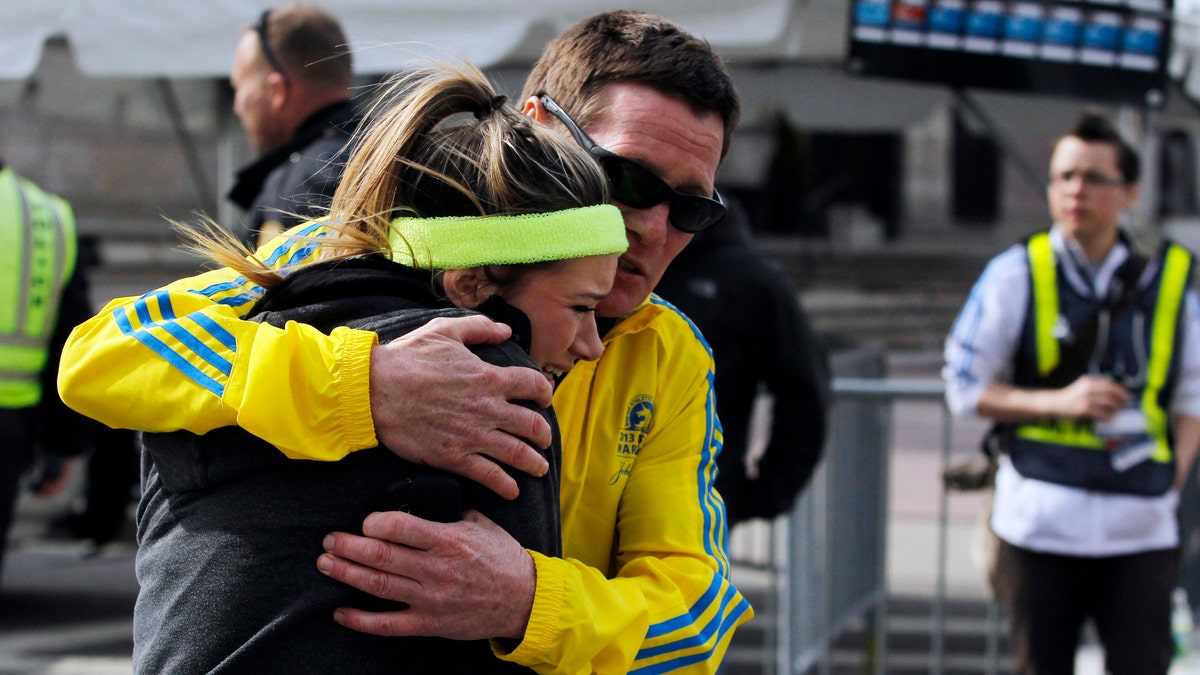
A woman is comforted by a man near a triage tent set up for the Boston Marathon after explosions went off at the 117th Boston Marathon in Boston, Massachusetts April 15, 2013. (Reuters)
As the country wakes up the day after the horrific tragedy in Boston, the task at hand is now to help the injured recover and give them all the support that they need.
As of the latest reports, there were at least 176 wounded and as many as 10 amputations have already been performed, according to reports from FoxNews.com.
Losing a limb is quite traumatic, but with modern technology and the proper support, people can regain their capabilities and go on to live full lives. However, let’s not lose sight of the fact that the treatment and short-term recovery from these injuries is quite challenging.
When it comes to loss of limb, a patient’s outcome is predicated on several factors. If you’re talking about leg injuries, the site of the amputation – whether below the knee, through the knee or above the knee – matters greatly.
“The most common place to amputate is below the knee, to save the knee joint - and that makes walking (with a prostheses) much easier,” Dr. John Wilber, an orthopedic/trauma surgeon with the UH Case Medical Center in Cleveland, Ohio, told FoxNews.com.
The surgical decision, of course, is based on tissue damage and adequate blood supply.
Because of the traumatic nature of these injuries, victims will likely undergo two to three surgeries over the course of three to four days, Wilber said. While doctors will treat patients with antibiotics, patients are still at serious risk for infection, Wilber noted.
“Unfortunately, because of the contamination, you are vulnerable to almost any type of infection from multiple different organisms,” Wilber said.
The operative techniques are well understood by the surgical team. But for the patient, the post-operative period becomes more important. Active management of pain can be challenging, especially when patients complain of what is known as phantom limb pain. This is a condition where patients still feel that they have pain in areas where their limbs once were – especially in the short-term after surgery.
Two important components of recovery have to do with the involvement of physiotherapists and occupational therapists. These people are instrumental, because they are going to be responsible for developing the prosthetic devices needed. These tools will help patients begin to move and exercise the new muscle groups they will need to utilize in order to become more mobile.
Eventually, these folks will go home and changes will have to be made, not only in their lifestyle, but in their homes, their bedrooms and sometimes even the bathrooms. Occupational therapists can help to address some of the issues that patients who go home will eventually have to undertake.
Finally, patients will need lots of emotional support. Post-traumatic stress syndrome is something that becomes quite prevalent in these tragic terrorist attacks. Mental health workers will need to focus intensively on making sure that these folks get all the help they need.
What we can do as a country is pray, give them our love and never forget.
